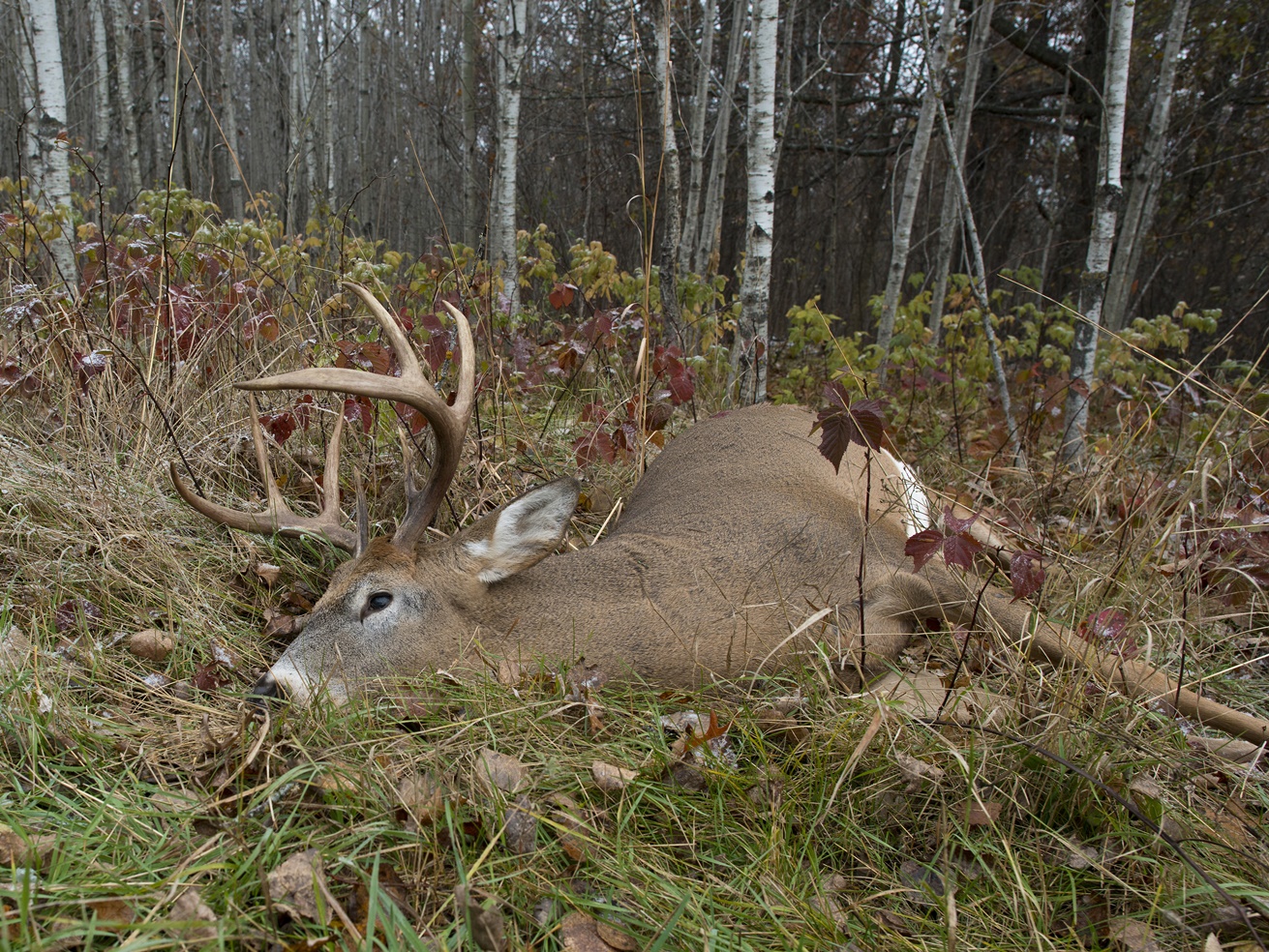We’d all like a good, clean lethal shot. And our prey would probably prefer that too, if the alternative is taking off with an injury. But, whether hunting is based on luck or skill, we may all find ourselves in a situation needing to track a blood trail during hunting season. Following a blood trail is a developed skill, but we’ve compiled some tips to assist your odds of success, for both the sake of you and your prey. For these purposes, we’ll focus on tracking a deer blood trail.

Watch Your Shot
Knowing where your shot hit the deer, and how it reacted, is a key component of the tracking process. A deer shot in the vitals (lungs or heart) will bolt at high speeds and may even throw in a “mule kick” with their hind legs. These deer usually won’t get very far, coming down within 100 yards of being shot. By contrast, a gut shot deer will hunch up its back from a gut shot.
Shots to less vital areas will take longer to kill the animal. It’s important that you are patient in your blood trailing, especially in these scenarios. Pushing an injured deer will increase your chances of not recovering the deer. The best thing you can do is wait for the deer to bed down and expire. For all shots, allow the deer to clear the area before you expose yourself from your vantage point.
The general rule of thumb is to wait at least thirty minutes before pursuing the blood trail of a deer shot in the vital organs. For liver shot deer, if the weather permits, allow the deer multiple hours to bed down. Gut shot deer require the longest time—sometimes even 8-10 hours—to be brought down. Even once you’ve spotted a down deer, approach it assuming it’s still alive.

Read the Trail
Where you shot the deer will also directly impacts the type of blood trail you can expect. For example, a double lung shot would result in lots of blood on the ground---and a shorter, easier to follow blood trail. Shots that result in internal bleeding will leave less blood behind, so take note of fresh tracks. More commonly, blood trails look less like a murder scene and more like a spattering of blood droplets. As a rule of thumb: archery shots will usually result in more blood, and blood from a deer on the move will result in spray and splatter formations.
The blood’s color will also vary by impact location. This is especially useful if you’re archery hunting and able to recover the arrow. Lung shots will result in blood that is more pink than red, and frothy. Red blood that is dark and rich in color, maybe even with some small bubbles, could be the result of a heart or liver shot. Blood that has remnants of plant matter or tissues, perhaps with a green or yellowish tint and bad odor, comes from a gut shot.
While following a blood trail, mark your last blood with toilet paper or fluorescent ribbon. This way, if you lose the trail, you can easily double back for reference. If available, take another person along for an extra set of eyes. Helping you find your deer is a practice of ethics and will help your buddy refine their own blood trailing skills.
Unfortunately, superficial wounds can produce a lot of blood, but not a fatal shot. These include: shoulder hits, hits to the muscle band just below the spine, the brisket area below the lungs and neck shots (*unless you hit the carotid artery or jugular vein).
Key Locations
In an expanse of open country, your physical surroundings can look very different from one vantage point to another. Before you approach the location where the deer was shot, make sure to note its physical surroundings. This will be the start of your tracking, so take time to hone in on the exact location before you approach from where you took your shot.
Simultaneously, note the direction in which the deer took off. Follow this trajectory when you’re hunting for a blood trail. In seeking out a blood trail, crouching close to the ground will help you stay on the trail amidst the colors and textures of the vegetation. It’s also important to look for blood that was brushed off onto trees and brush. Follow the clues!
Often, if you lose the trail and are unable to recover it, move toward the nearest water source. An injured animal will more often move downhill and toward water.

Exhaust all efforts
Have you lost the trail? Do your due diligence to recover the blood trail. You might consider a zig zag or grid pattern outward from the shot. It’s important that you exhaust all available efforts to recover the animal.
If bad weather is moving in, exercise patience again. Wait for the weather to pass, resuming your search with a grid system search. An exception would be if you’re confident you made a double lung shot, then you should pursue the trail.
Pro Tip: If you’re having difficulty confirming a blood trail, you might consider carrying a small bottle of hydrogen peroxide. Blood that is sprayed with hydrogen peroxide will foam up.
In conclusion, so much of this sport comes down to ethics. As hunters, we should do everything we can to make quick, lethal shots. Secondly, we should put in every effort possible to recover prey. Employ your senses to watch, listen, and wait.
Learn more with this interactive animation by Realtree detailing tips related to specific shot locations
































